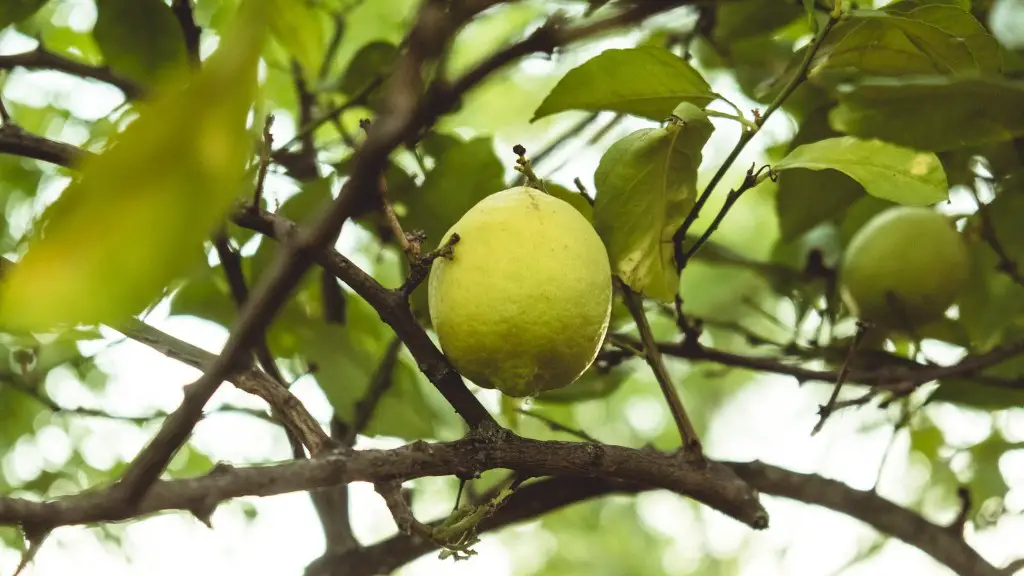With many people turning to indoor plants due to limited outdoor space, or simply because of the various benefits it has, it’s no surprise that questions like ‘Can I use a grow light on my lemon tree?’ come up. The short answer is yes, you can, with some caveats and dos and don’ts. Here’s a closer look at what you need to consider in your decision.
Light Intensity
The first thing to be mindful of when using a grow light for your lemon tree is light intensity. If you place the lamp too far away, the strength of the light won’t be sufficient to support photosynthesis and the tree won’t grow properly. On the other hand, if the lamp is too close, it may lead to leaf burn due to overexposure.
You’ll need to get the right lamp for your particular lemon tree. LED and CFLs are both good choices, as they offer varying levels of intensity, allowing you to customize the lighting conditions. Once you’ve found the right lamp and distance, you’ll want to check its brightness at least once a week.
Light Duration
In addition to intensity, it’s important to monitor the duration of the light. Lemon trees in particular need lots of light for prolonged periods of time, typically 8-10 hours a day. Examine your scheduled and make sure you’re giving your plant enough time to photosynthesize and grow.
It’s worth noting that the duration may vary depending on the type of lamp and the size of the lemon tree. Some trees may need less light and some may need more, so make sure to adjust accordingly. Be sure to also switch off the lights at night, providing the tree a darkness period.
Temperature & Humidity
Temperature and humidity are key factors when it comes to lemon trees, regardless of whether they’re indoor or outdoor. The temperature needs to remain on the cooler side, generally between 65-75℉, otherwise the tree will become stressed. Using a grow light can help to warm the area, but make sure not to get it too hot.
When it comes to humidity, it needs to be at least 50%. You can maintain this level by misting the plant and using a humidity chamber. Again, the grow light can help a bit here too, but it’s not a substitute for proper maintenance.
Fertilization
Fertilization is another important factor for lemon trees. A balanced fertilizer should be used once every two weeks, preferably one with a combination of nitrogen, phosphorus, and potassium. You should also add a few drops of liquid seaweed fertilizer to the mix, as it helps to improve the soil and the tree’s overall health.
When it comes to fertilizer application, make sure to keep it away from the stem and the leaves, as fertilizing the leaves can lead to burn and damage. Also remember to water the tree regularly, as this will help your fertilizer to be more effective.
Trimming & Pruning
Trimming and pruning are essential when it comes to maintaining the health of a lemon tree. Pruning helps to encourage new growth and keep the shrub in shape, while trimming helps to remove dead or diseased twigs and branches. Both should be done at least once a month, whenever you notice any signs of overgrowth or damage.
When pruning, you should always use a pair of sharp shears to ensure a clean cut. Make sure to prune cautiously, as overpruning can be damaging to the tree. Trimming should also be done carefully, as pruning too deeply can lead to shock and dieback.
Pests & Diseases
One of the most common problems with lemon trees is pests and diseases. These can be caused by a number of factors, including overcrowding, insufficient sunlight, or improper care. It’s important to be on the lookout for these issues, as they can quickly lead to decline in the health of the tree.
Inspect your tree regularly for signs of pests and diseases, such as discoloration of the leaves, wilting or browning of the branches, or stunted growth. If you notice any abnormalities it’s important to deal with the issue quickly. You can use a variety of pest control methods, from manual removal to chemical treatments.
Soil Quality & Nutrient Deficiencies
The soil quality and nutrient levels of your lemon tree also play a role in its wellness. If the soil is too dry, waterlogged, or overly acidic, then the tree won’t be able to absorb the nutrients it needs. You’ll need to use a good quality potting mix and amend the soil periodically.
Checking the nutrient levels of the soil is also important. Common deficiencies like nitrogen, phosphorus, and potassium can stop the tree from growing. To identify these deficiencies you’ll need to get the soil tested, then use a slow-release fertilizer to replenish the nutrient levels.
Watering Requirements
Watering requirements depend on the size of your tree and the climate of your area, but as a general rule, you should water your lemon tree at least once a week, or as needed. Make sure you avoid over-watering, as this can cause root rot, but at the same time, don’t let the soil dry out for too long, as this can lead to stunted growth.
You should also water from the bottom up, to ensure that the moisture penetrates deep into the soil. Watering from the bottom is especially important when using a grow light, as the additional heat can quickly dry out the soil.



